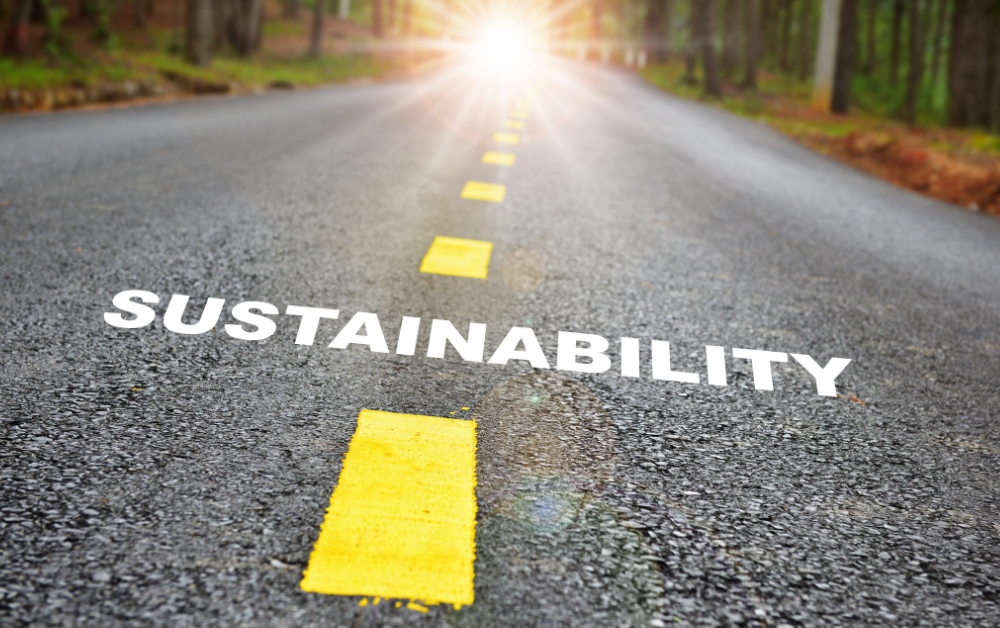Textile Industry Celebrates Earth Day
by ajones | Apr 14, 2021 | Sustainability, Earth Day, Blog | No Comments

Earth Day was initially celebrated by the United States on April 22, 1970, to raise awareness of environmental concerns. Soon after the first Earth Day, the country created the Environmental Protection Agency and passed its first environmental laws. In 1990, Earth Day became a globally renowned movement as more than 200 million people in 141 countries mobilized. Today it is recognized as the world’s largest secular observance. Indeed, over 190 countries engage, with over one billion people participating to mark the holiday each year (History, n.d.).
Fashion’s impact on the environment is undoubtedly sobering. For example, in 2018 the industry was responsible for 2.1 billion metric tons of greenhouse gas emissions–about the same amount of gases as the economies of the United Kingdom, France, and Germany combined (Berg et al., 2020). While acknowledging how vital it is that changes are made, the textile industry seeks progress in celebrating Earth Day. This holiday, along with others such as Fair Trade Day, National Secondhand Wardrobe Day, and National Laundry Day, provides opportunities for education and renewed dedication to sustainable practices. In fact, this is what consumers want.
For instance, A.T. Kearney’s 2019 Earth Day Consumer Sentiments Survey found that 80% of respondents feel that the best way they can help the environment is by changing their shopping habits and everyday behavior. However, only 52% have adapted their purchases based on products being marketed as “green” (Chafin & Kleinewillinghoefer, 2019). Therefore, highlighting Earth Day and similar holidays emphasizes the importance of awareness and action on every level.
Earth Day in the textile industry
The 2021 Earth Day theme is “Restore our earth” (Chan, 2021), and numerous brands will mark the occasion. Target, for example, will hold a month long car seat trade-in program. Last year, in 2020, a number of brands celebrated Earth Day by educating consumers and making their own pledges. These included:
- The owners of Versace, Michael Kors, and Jimmy Choo released their first group-wide corporate responsibility strategy with a 100% carbon-neutral goal using only renewable energy by the end of 2025.
- Walmart launched a new Reduce, Reuse, Recycle shop offering customers the opportunity to sort using a range of sustainable features.
- Banana Republic reaffirmed its sustainability goals and introduced a new campaign, Better Republic, which features eco-friendly products and supports small businesses owned and operated by women.
- Using more sustainable materials and methods, Adidas by Stella McCartney released the collection, “Every Day is Earth Day.”
- JCPenney partnered with Give Back Box to help customers easily donate gently-used items.
- REI released a calendar in late 2019 sharing 52 ways to reduce impact, get active, and improve the world for an entire year.
- Wrangler announced the brand had surpassed its goal of saving 5.5 billion liters of water in its denim manufacturing since 2008; they had saved 7 billion liters.
Living sustainably
How can consumers be more sustainable throughout daily life? In order to practice sustainable fashion, Harper’s Bazaar (De Klerk, 2020) suggests:
- Only purchase apparel that will be worn at least 30 times.
- Look for certifications that confirm brands implement sustainable practices.
- Purchase secondhand or vintage clothing.
- Rent clothing instead of purchasing.
- Purchase items that can be worn year-round.
- Donate unworn clothing.
- Follow care instructions.
- Repair clothing.
- Invest in quality over quantity.
In conclusion, Earth Day and similar holidays are important reminders of the need for environmental awareness. However, beyond being aware, as industries and consumers change their daily practices, they will make a difference for the earth now and in the future.
References
Berg, A., Granskog, A., Lee, L., & Magnus, K-H. (2020, August 26). Fashion on Climate. McKinsey. https://www.mckinsey.com/industries/retail/our-insights/fashion-on-climate
Chafin, C., & Kleinewillinghoefer, N. (2019, July 9). Harnessing the Growing Power of Eco-Apparel. Women’s Wear Daily, 16. https://wwd.com/business-news/business-features/a-t-kearney-sustainability-report-think-tank-1203216342/
Chan, E. (2021, March 21). Everything you need to know about Earth Day 2021. Vogue. https://www.vogue.co.uk/arts-and-lifestyle/article/earth-day
De Klerk, A. (2020, April 22). 10 simple steps to being more sustainable. Harper’s Bazaar. https://www.harpersbazaar.com/uk/fashion/what-to-wear/a41158/how-to-be-sustainable-fashion/
History. (n.d.). Earth Day. https://www.earthday.org/history/

Fair Trade in Fashion: Fair for all in the Industry
In today’s global world, trade influences the production of most goods and services in one way or...

The importance of transparency and traceability
Many consumers are aware of the term sustainability, let alone numerous related terms like...

The Roadmap to 2030: Fashion Initiatives
Sourcing Journal’s 2022 Sourcing Report is entitled “The Road to 2030.” This title comes from the...
